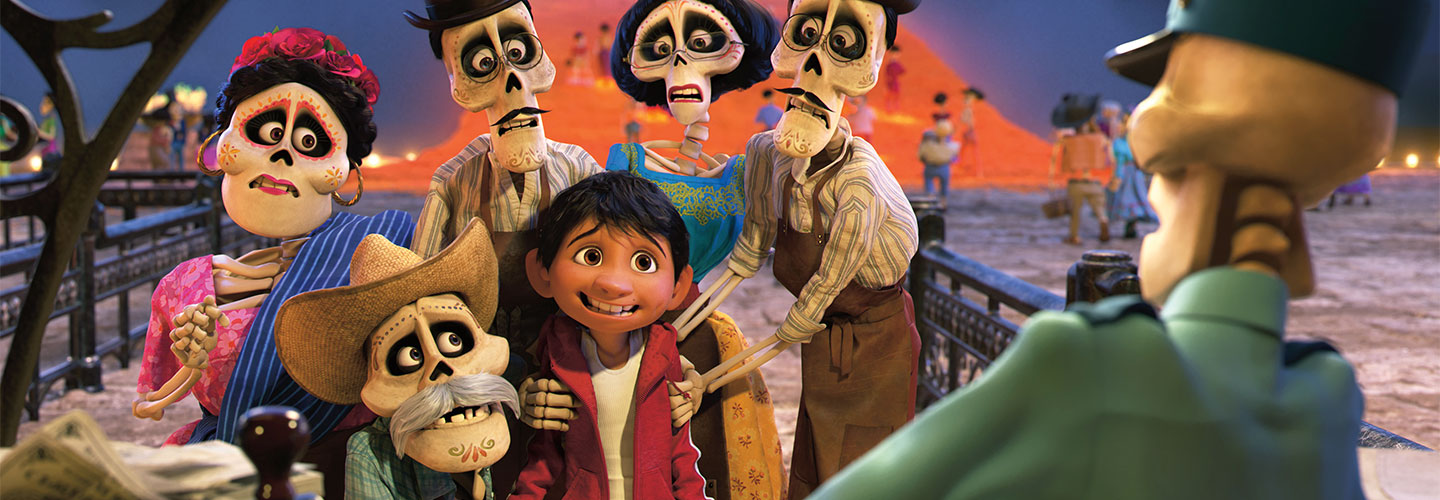From October 31 to November 2, people across Mexico honor the spirits of their ancestors. During Día de Muertos, or Day of the Dead, families make altars with the ancestors’ photos, belongings, and favorite foods. This holiday was the inspiration behind Coco, the newest Pixar film.
From October 31 to November 2, people across Mexico remember their lost loved ones. The celebration is called Día de Muertos, or Day of the Dead. Families display their ancestors’ photos, belongings, and favorite foods on altars. This holiday was the inspiration behind the newest Pixar film, Coco.

